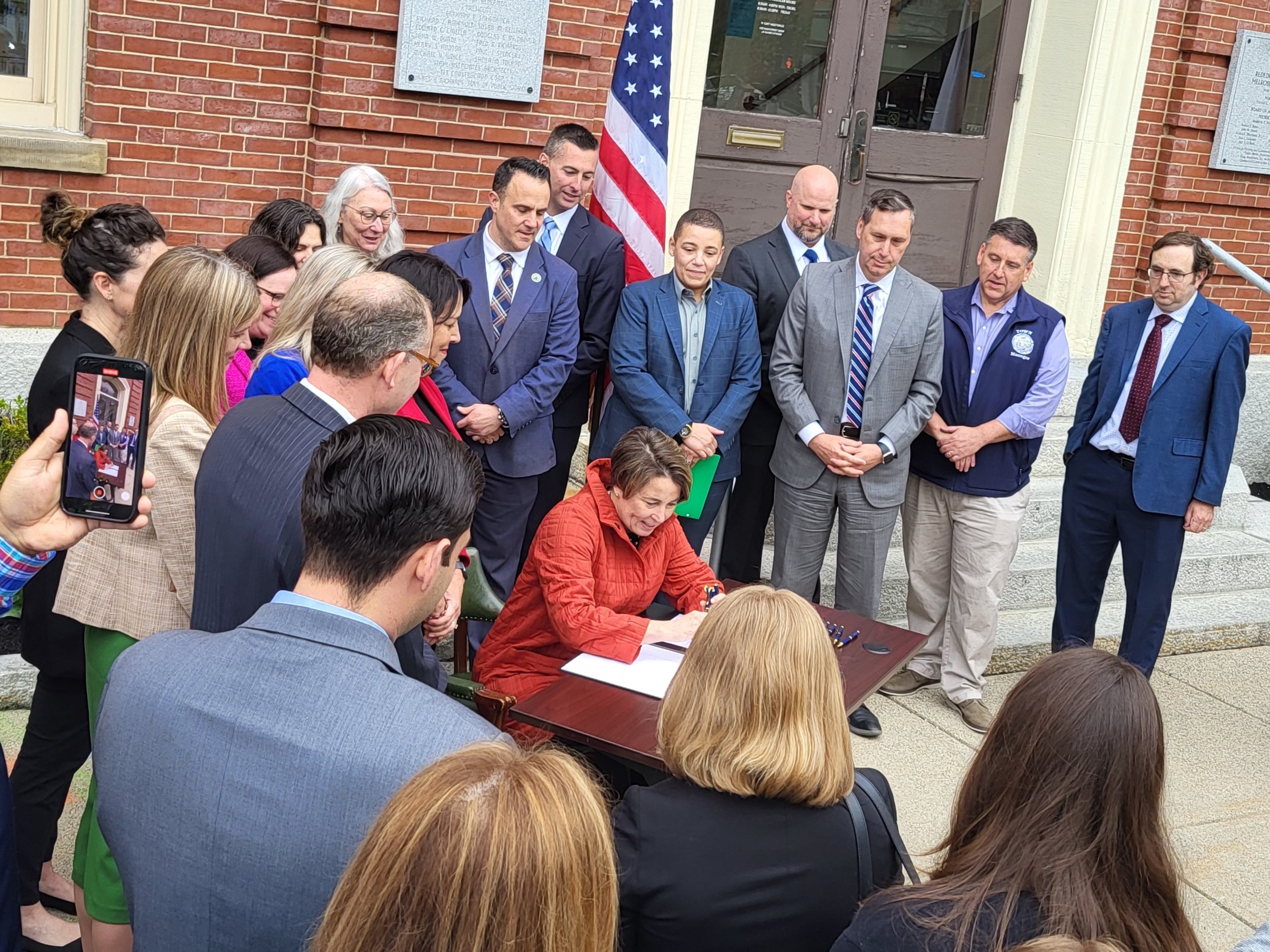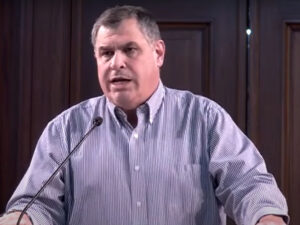Healey Signs Chapter 90 Road Bill with Supplements, but Not a Baseline Boost…
MELROSE—Governor Maura Healey signed a bill on May 3 that dispersed the state’s annual Chapter 90 road funds. Named after its chapter of the general laws, the money is essentially a type of aid to cities and towns. Flanked by legislators and finance, transportation, and municipal officials in this cozy Boston suburb, with the stroke of a pen, Healey made available $375 million for transportation work statewide.
Chapter 90 has become a source of consternation for many public works officials, though. The bill Healey signed retained the $200 million baseline appropriation. Yet, that figure has stood still almost since the Great Recession began. The legislature supplemented it with $175 million in additional grants. However, public works officials will still want to see the baseline change at some point.
“In cities and towns across our state, this is funding for projects that residents and their elected officials have deemed critical for their community’s quality of life. We’re talking about bridges and roads, sidewalks, public transit, electric vehicle access and so much more,” Healey said.
“These investments are made possible by strong collaborative partnerships across the legislative and executive branches working with our stellar local officials,” she continued.
The $175 million supplement breaks down into seven $25 million grant programs. This includes programs for small bridges, state roads under municipal administration (e.g., Route 20 in Springfield), mass transit access, bus service infrastructure and electric vehicle charging stations.
Healey made a point to highlight the rural road program. With lots of mileage but lower populations, small towns, especially in Western and Central Massachusetts, struggle to maintain roads. While this $25 million bucket mirrors Chapter 90’s generally—the largest grants still go to the state’s largest cities such as Springfield’s $184,000—legislators tweaked those numbers to favor rural communities.
Melrose Mayor Jen Grigoraitis indicated her community would be using its baseline $523,286 allocation for critical work, including pedestrian safety.
“Chapter 90 funds give towns and cities the chance to improve the safety, function and beauty of our local neighborhoods and local transportation infrastructure,” she said. “The additional Chapter 90 funding in the law signed today will make a world of difference for cities like Melrose and enable us to continue to pursue proactive and high-impact improvements to local roads and routes.”

Savoy hits the jackpot and breaks into six-digits despite being a fraction of Russell. (via Wikipedia)
In Western Massachusetts as elsewhere, the benefits largely flow to communities based on street mileage. For example, on the low end, Russell, population 1,643, receives a baseline of only $98,085. Savoy, population 645, will receive a baseline of $194,485. Far more dense towns like Longmeadow and Greenfield receive $476,861 and $622,758 respectively.
The cities in the 413 receive even more. Holyoke will receive $1,000,258 while Springfield’s allocation is $3,588,375.
Healey and others touted how early the funds received authorization. Some local officials appreciated the funding but shrugged at the timing.
Springfield public works chief Chris Cignoli said they had received noticed in February of the funding outline. In March, his department submitted and the City Council approved an order accepting Chapter 90 funding for fiscal year 2025. Bids have already begun to go out. Although funding follows the fiscal year, some work may begin sooner.
“With regards to the money going through early—we receive preliminary notice in February every year—but as I said it is fiscal year money so regardless of when it is actually approved it cannot be accessed until July 1,” he said in an email. “Since the funds are loosely tied to the State budget it usually gets approved in Late May / early June anyways.”
Last year, officials across the state like Cignoli had raised concerns about the $200 million baseline not budging for years. Healey had appeared to respond to that with a proposal to up the baseline by $100 million. Her legislation also put Chapter 90 into a multi-year bond bill. This matched advocacy from the Massachusetts Municipal Association.
The legislature did not follow suit. Moreover, as Cignoli indicated, cities and towns are familiar with the grants the $175 million flows into. Because the Commonwealth tries to allocate it across the state, the individual grants may be limited.
Speaking to the press after the signing, Healey acknowledged that the baseline buys less now and that more was necessary.
“These are really challenging times when you’re talking to local leaders, communities around the state, and certainly inflation is an issue. Costs have gone up,” she said. “It’s always the case that you want more funding, and our communities need more funding for infrastructure, but I appreciate what the legislature has done this year through this funding.”
Healey had signed the bill hours before the April revenue report came out. Her administration breathed a sigh of relief that the figures beat expectations.
On whether the state would continue pressing on the baseline funding under Chapter 90, Secretary of Administration & Finance Matt Gorzkowicz emphasized the funding’s timing this year. However, he also noted that the administration has tried to add funds in the capital budget. It also sought to allocate funding from the millionaires tax under the Fair Share Amendment.
“We continue to look for opportunities to try to build upon that $200 million base that has been historically funded in our capital program and we’ll continue to do that,” he said.

